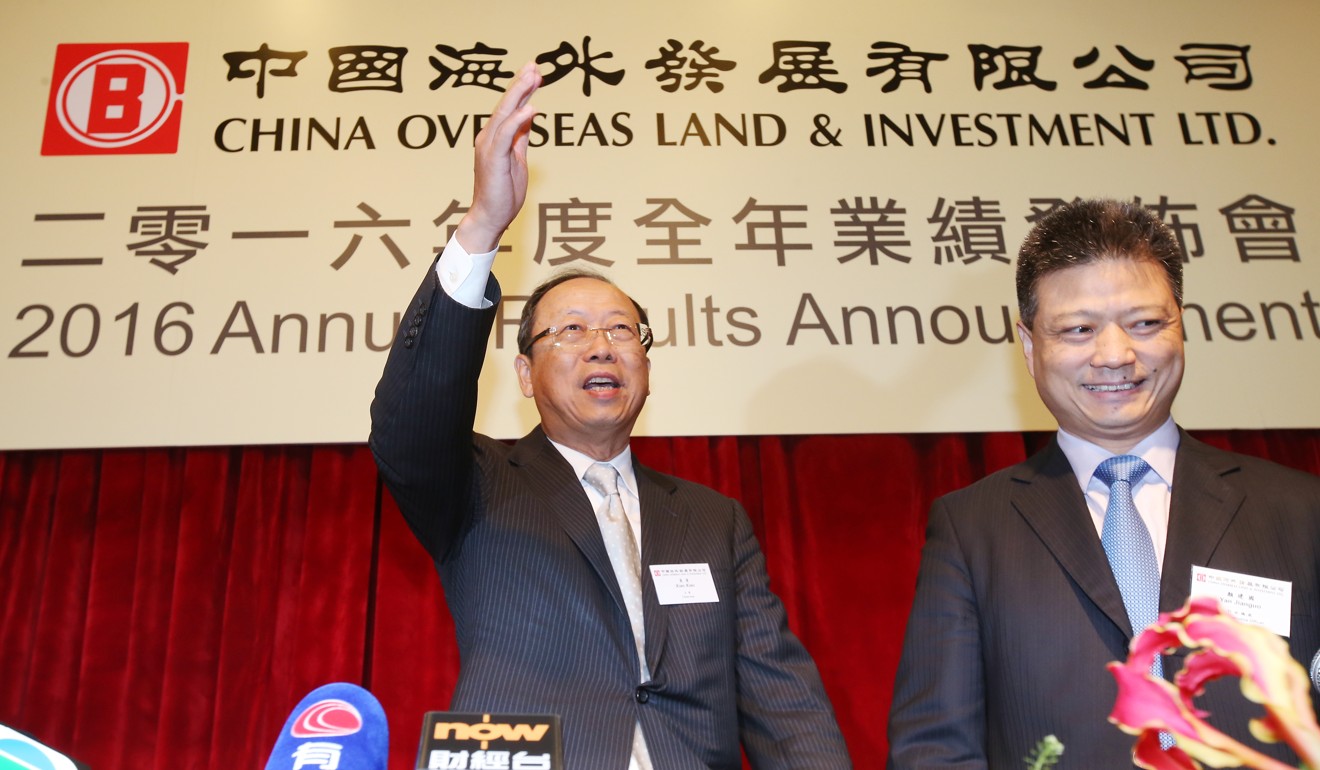
China Overseas Land & Investment core profit up 9.2pc, but lags analysts’ estimates
China Overseas Land & Investment, the country’s top property developer by market value, logged a 9.21 per cent rise in core profit, mainly driven by property sales.
The state-backed developer posted a core profit of HK$34.26 billion (US$4.37 billion) in 2017, after excluding revaluation gains. The figure in 2016 was HK$31.37 billion.
Net profit, including a total of HK$6.51 billion in fair value gains and tax gains, jumped 10.1 per cent to 40.77 billion, higher than Bloomberg's analyst forecast of HK$35 billion.
Total revenue grew 1.2 per cent to HK$166.01 billion, the company said in a filing to the Hong Kong stock exchange.
The profit gain was on the back of a 10.2 per cent jump in contracted sales to HK$232.07 billion from HK$210.6 billion a year earlier.
CCB International said that the reported 2017 annual contracted sales increase is yet significantly underperforming the peer average growth of 45.6 per cent.
In the past year, the 10 biggest Chinese developers by market capitalisation posted an average of 56 per cent growth in contracted home sales, according to Bloomberg data.
“This was the second consecutive year that China Overseas Land & Investment underperformed the industry average,” said Frank Miao, analyst with CCB International, in a note. “Our earlier optimism over the company was based on our belief that the new management team that took over in June 2017 would quickly settle in and rejuvenate the firm. However, by now it is evident that the overhaul of China Overseas Land & Investment will take longer than we had anticipated. Our new forecast calls for 26.4 per cent year on year contracted sales growth in the 2018 financial year.”
JP Morgan said it believed the chairman’s hard work “will pay off soon” and that the company can meet the 400 billion yuan (US$63.42 billion) in sales by 2020, a target the company set two years ago.
“2017 contracted sales are a result of slow land banking in 2016, and after chairman Yan came on board in January 2017, focus has been on restructuring the land bank,” said Ryan Li, analyst with JP Morgan in a note.

JP Morgan said the company should have saleable resources of 320 billion yuan in 2018 and contracted sales at 250 billion yuan ar rise of 30 per cent on year.
Last year, the company bought 76 parcels of lands in 31 cities in mainland China and Hong Kong, bringing the total land bank to 63.75 million square meters.
“The company will seize the opportunity to support the central government’s new emphasis on rental property development and reform of land supply to enter the market for long-term leasing of apartments,” said Yan Jianguo, chairman and chief executive officer of China Overseas Land, in the filing. “The company will further accelerate in development of properties in education, elderly-care and logistics sectors.”
Shares of China Overseas Land dropped 2.7 per cent to HK$26.90 in afternoon trading on Monday, following the midday results announcement.
The company declared a dividend of Hong Kong 45 cents per share, bringing the total dividend for 2017 to Hong Kong 80 cents per share. The total dividend in 2016 was Hong Kong 77 cents per share.

